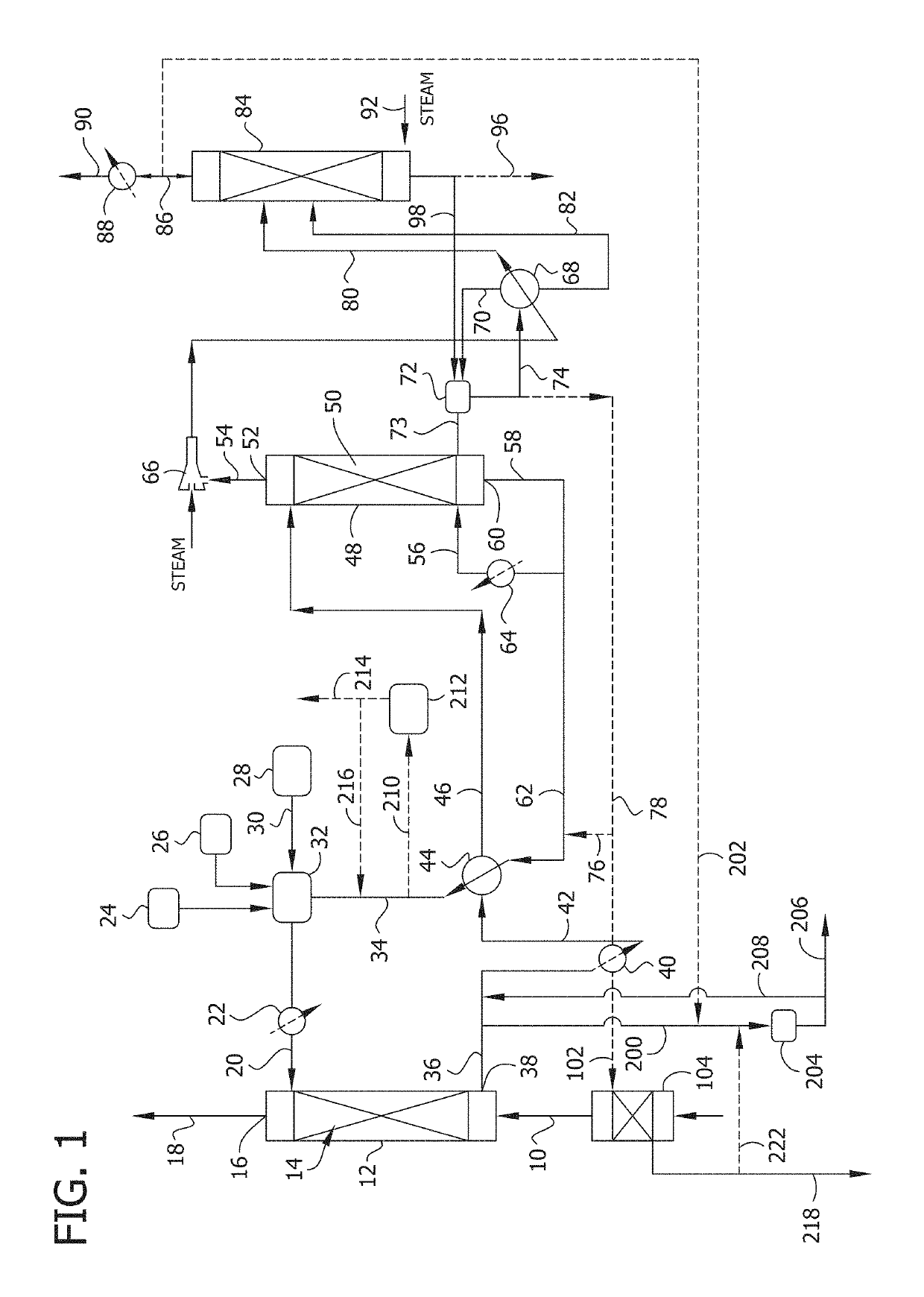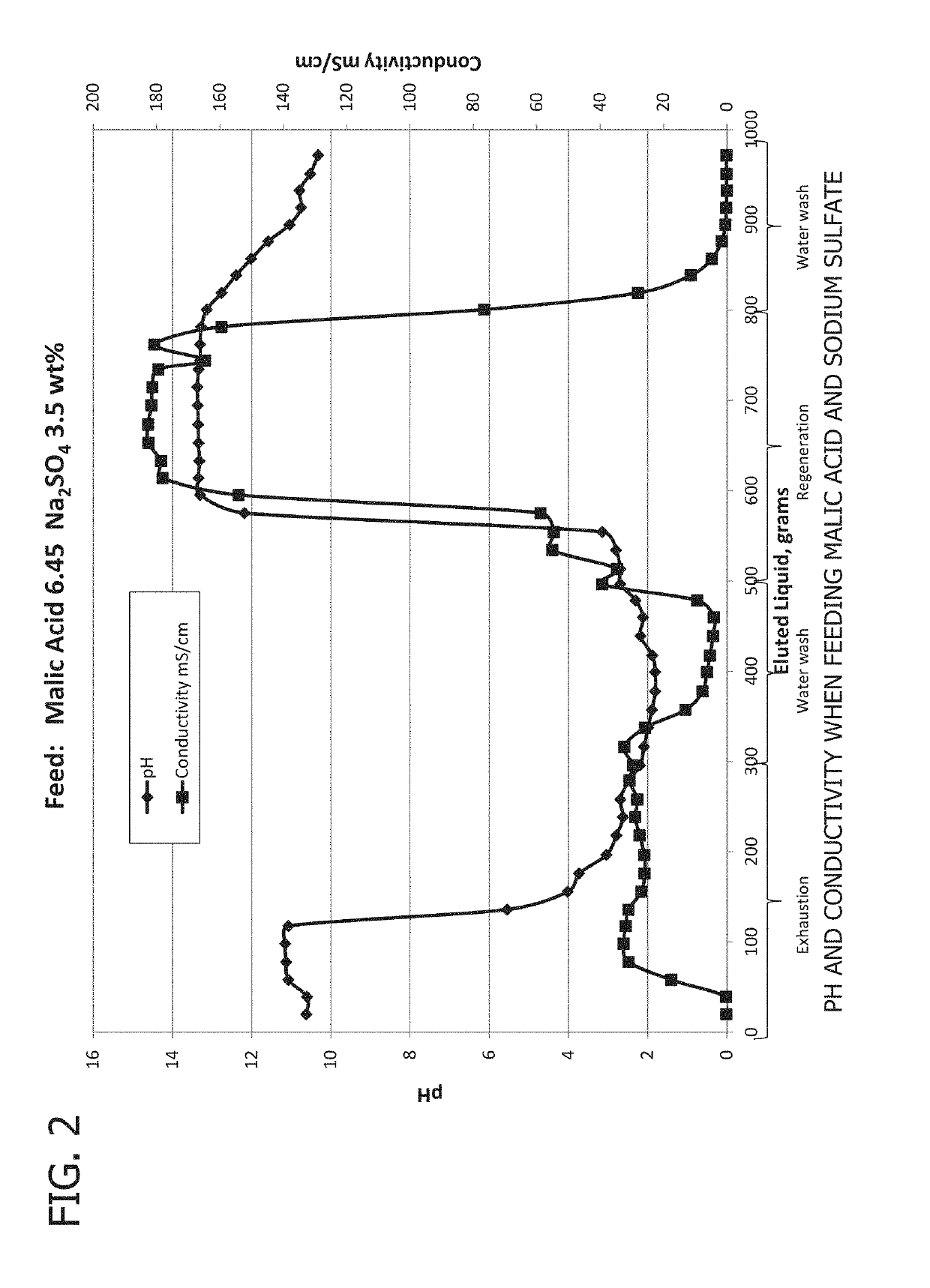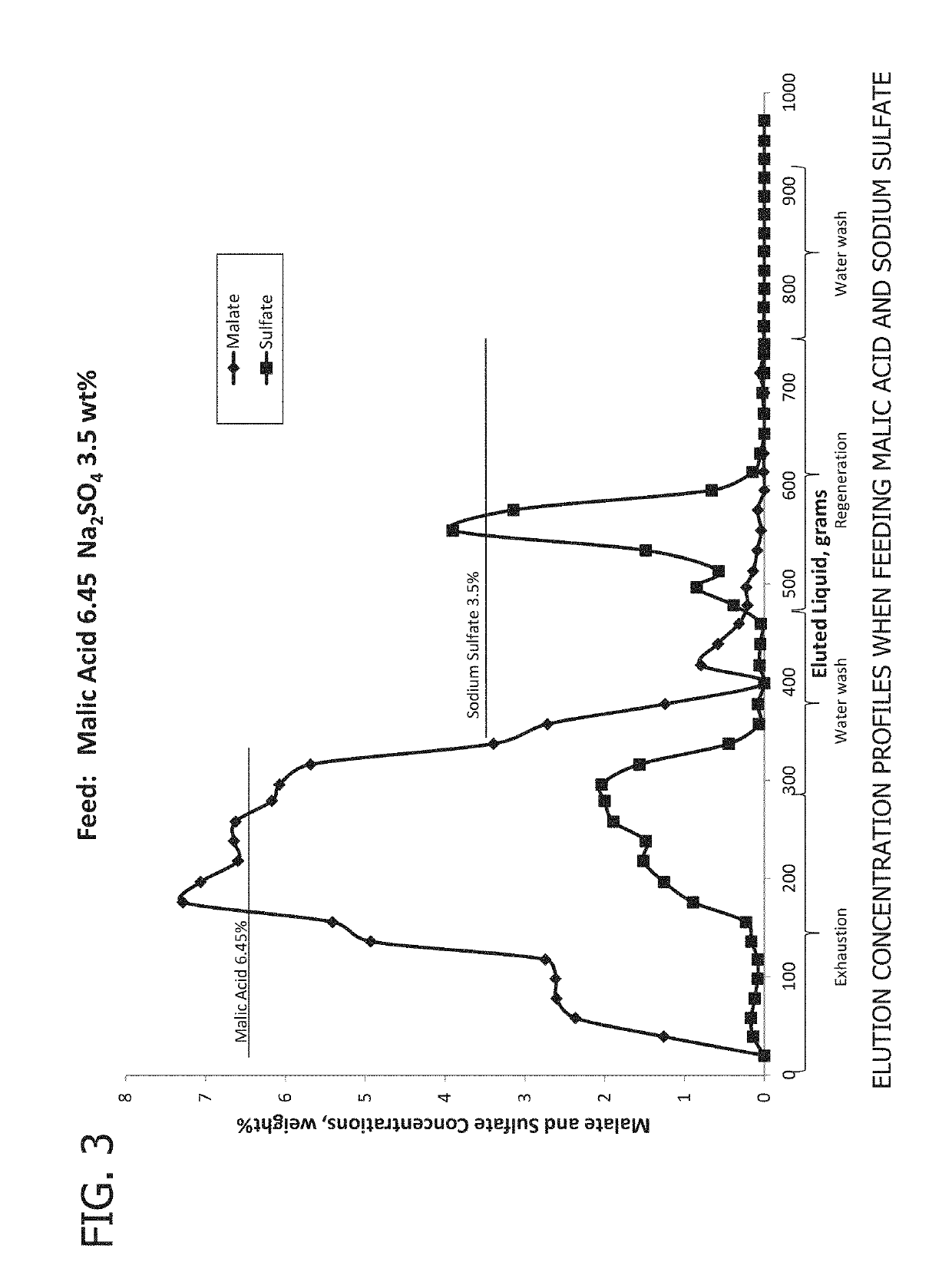Removal of sulfate from solvent solutions using an anion exchange resin
a technology of anion exchange resin and solvent solution, which is applied in the direction of ion exchanger, dispersed particle separation, separation process, etc., can solve the problems of increasing regulatory pressure to reduce sulfur dioxide emissions, increasing sulfur dioxide emissions, and increasing the cost of capital investment of wet scrubbers and similar dry scrubber approaches, so as to minimize the loss of the absorbent polyprotic carboxylic acid salt, the effect of efficient removal of divalent sulfur oxyanion impurities
- Summary
- Abstract
- Description
- Claims
- Application Information
AI Technical Summary
Benefits of technology
Problems solved by technology
Method used
Image
Examples
example 1
[0091]Several weak base anion exchange resins were evaluated for use in the absorption and regeneration of sulfate from malic acid / malate absorption solutions. The absorption and regeneration of malic acid using a weak basic anion exchange resin was investigated to determine desirability. Solutions of malic acid, sodium bimalate, and disodium malate each containing sodium sulfate were fed to a weak base anion exchange resin. Initial studies were done with the Purolite A111 resin. Subsequently, at the demonstration facility discussed below the resin was changed to a denser resin A830.
[0092]The A830 resin was more preferred than the A111 resin due to the fact that resin A111 (specific gravity 1.02) was less dense than the aqueous absorption solution (1.05-1.1) and tended to float in the anion exchange vessel. In addition, fines were formed with the A111 resin that tended to plug the screen plates. The A830 resin is a denser resin (specific gravity 1.1) with a higher degree of crosslin...
example 2
[0100]In a first experiment (Experiment A), results shown in FIGS. 2 and 3, a feed solution containing 6.45 weight % malic acid and 3.5 weight % sodium sulfate was fed to an A111 anion exchange resin. The following table shows the concentration and properties of the feed solution.
Feed Concentration Experiment A
[0101]
ComponentMass (g)Weight PercentMalic acid19.346.45Sodium Sulfate10.503.50Sodium Hydroxide00.00DI Water270.1690.05Total300.00Feed pH1.98Feed Conductivity, mS / cm33.21
[0102]The pH and conductivity of the eluted solution were measured and samples were taken at regular intervals. FIG. 2 shows the pH and conductivity of the exit solution. At the beginning of the experiment the pH of the exit solution is high, reflecting the pH after resin regeneration. As more feed is added to the column, the pH begins to decrease and approach the pH of the feed solution. Similarly, the conductivity of the solution increasingly approaches the conductivity of the feed solution during the exhaus...
example 3
[0110]Based upon the above hypothesis, a further experiment was carried out (Experiment C) where sulfurous acid was added to the feed stream fed to an A111 anion exchange resin in order to convert malate to malic acid. The following table shows the concentration and properties of the feed solution.
Feed Concentration for Experiment C
[0111]
ComponentMass (g)PercentMalic Acid19.734.93Sodium Sulfate28.827.20Sodium Hydroxide7.641.91Sulfurous Acid15.203.80DI Water329.0282.17Total400.41Feed pH2.5Feed Conductivity, mS / cm78.8
[0112]The results of this experiment can be seen in FIGS. 6 and 7. In FIG. 6 the conductivity and pH profiles during the four steps of the cycle are shown. The results were similar to those observed in the previous experiments. Concentration results are shown in FIG. 7.
[0113]The concentrations of the sulfate, malate, and sulfite (reported as dissolved SO2) at the outlet of the column were also measured. Since all three of these ions are present in the solution, all of the...
PUM
| Property | Measurement | Unit |
|---|---|---|
| pKa | aaaaa | aaaaa |
| pKa | aaaaa | aaaaa |
| pKa | aaaaa | aaaaa |
Abstract
Description
Claims
Application Information
 Login to View More
Login to View More - R&D
- Intellectual Property
- Life Sciences
- Materials
- Tech Scout
- Unparalleled Data Quality
- Higher Quality Content
- 60% Fewer Hallucinations
Browse by: Latest US Patents, China's latest patents, Technical Efficacy Thesaurus, Application Domain, Technology Topic, Popular Technical Reports.
© 2025 PatSnap. All rights reserved.Legal|Privacy policy|Modern Slavery Act Transparency Statement|Sitemap|About US| Contact US: help@patsnap.com



